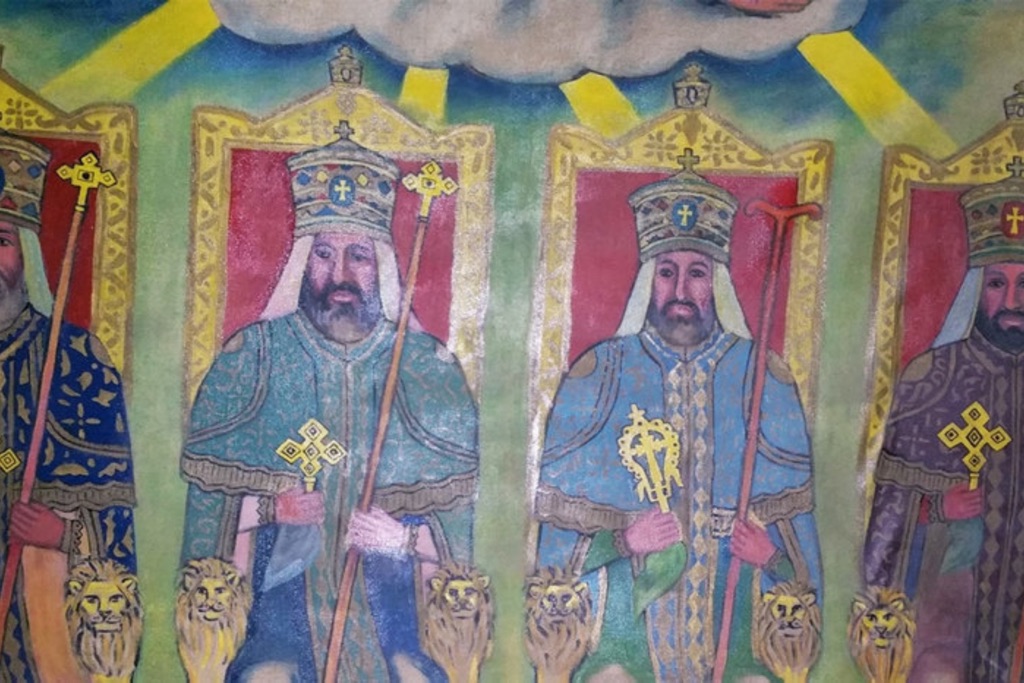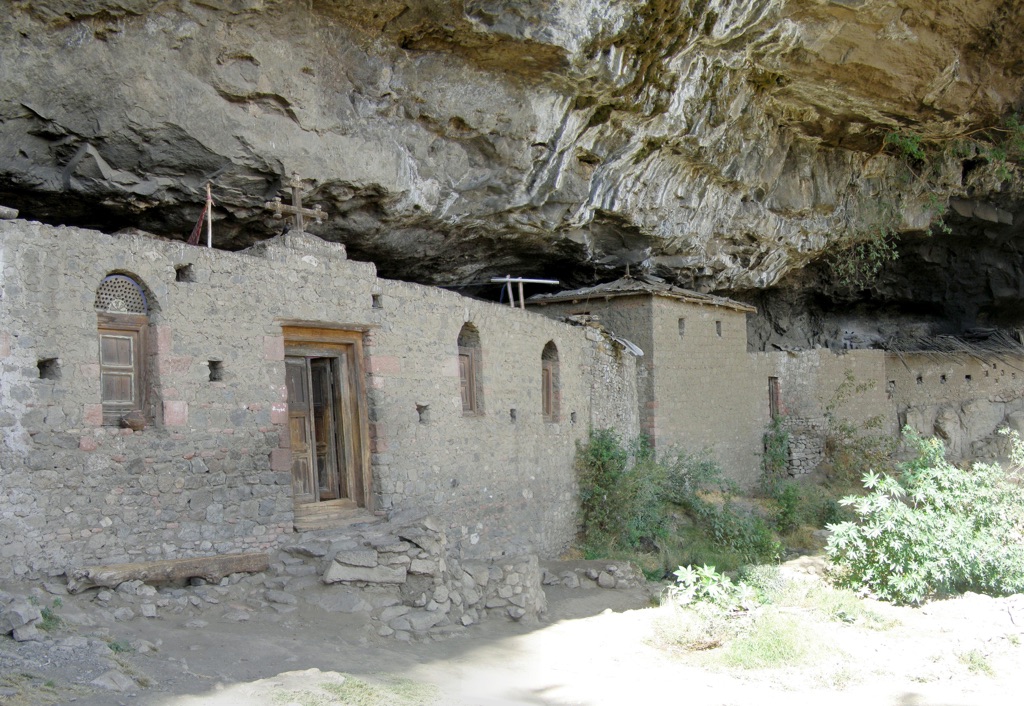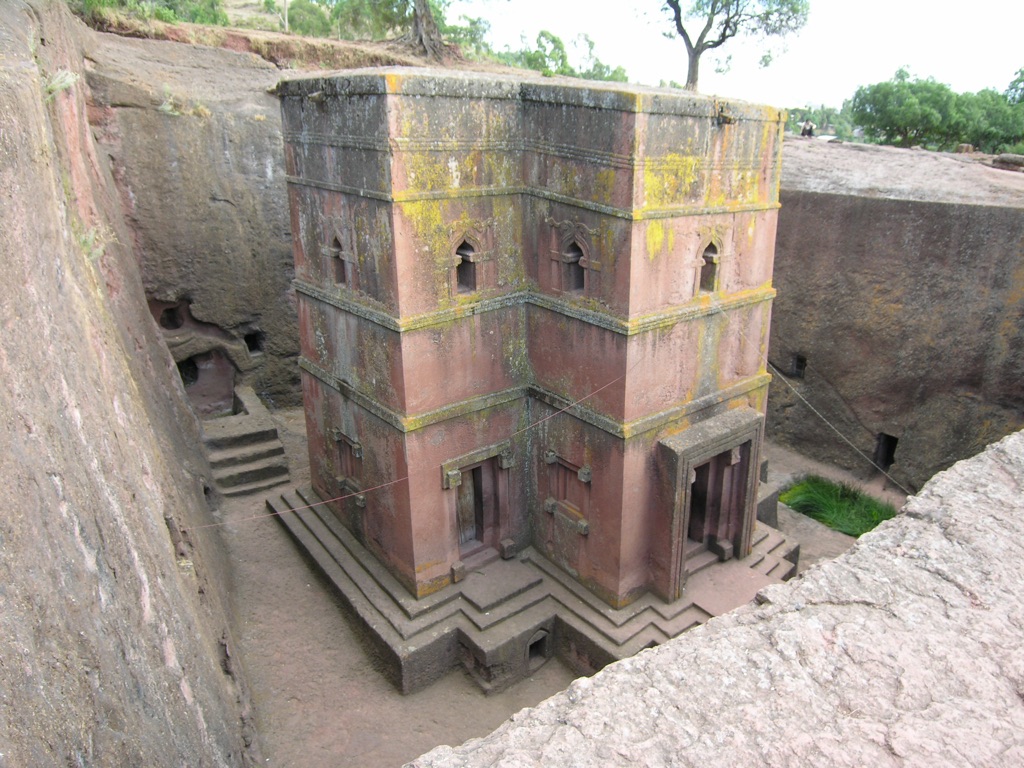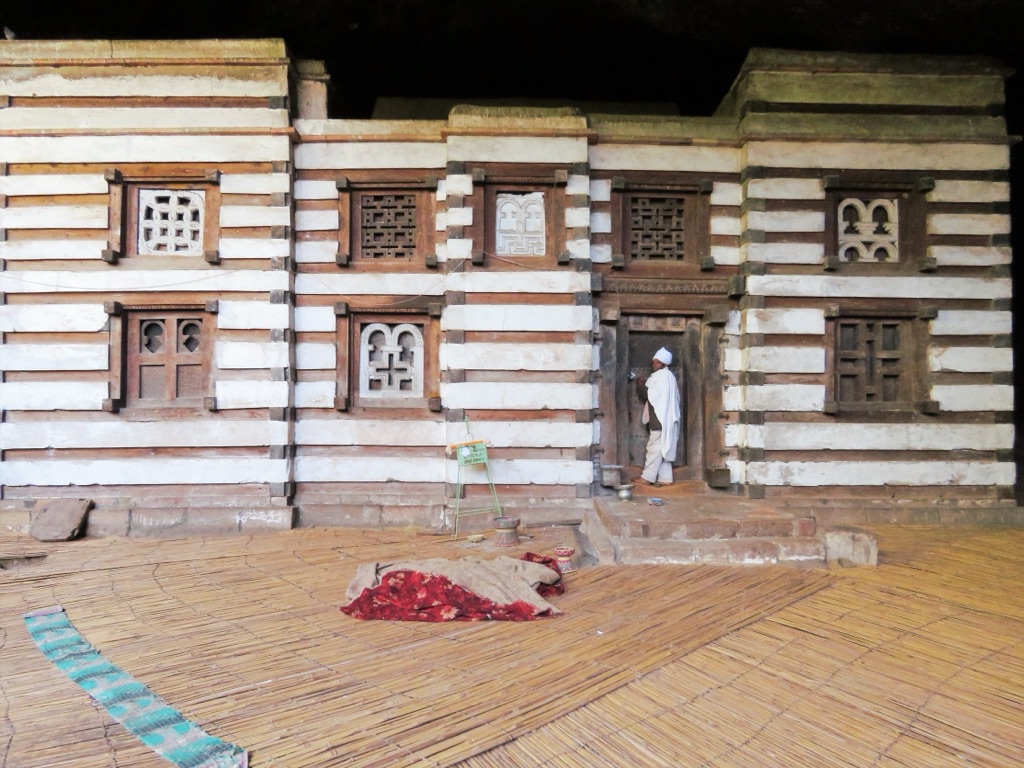Yemrehanna Kristos is a remarkable church located in the northern part of Ethiopia, near the town of Lalibela. It predates the famous rock-hewn churches of Lalibela, having been built in the Aksumite fashion with layers of wood and granite. This architectural marvel is nestled within a cave and is known for its interior adorned with intricate woodwork and frescoes. The church is named after the Zagwe dynasty King Yemrehanna Kristos, who is believed to have commissioned it in the early 12th century. It remains an important pilgrimage site and a testament to Ethiopia’s rich historical and religious heritage.
Zagwe Dynasty

The Zagwe Dynasty holds a pivotal place in the rich tapestry of Ethiopian history. It emerged after the decline of the Aksumite Empire and ruled from approximately the 12th to the late 13th century. Renowned for its remarkable architectural achievements, the dynasty left an enduring legacy. Among its most notable kings was Gebre Mesqel Lalibela, credited with the carving of the 11 rock-hewn churches, which now stand as a UNESCO World Heritage site. As Christian rulers, Zagwe kings prioritized the expansion of Christianity, leaving behind numerous churches and monasteries. The dedication of the Zagwe rulers to their faith and culture contributed immensely to the dynasty’s lasting influence on Ethiopian identity.
The Zagwe dynasty eventually gave way to the Solomonic dynasty. This transition often sparks debates among historians regarding its legitimacy and actual sequence of events. Yet, what remains undisputed is the indelible mark Zagwe dynasty kings left on the cultural and religious landscape of Ethiopia. Their rule is remembered for the peace and stability it brought to the region during their reign. Moreover, the dynasty’s period saw an increase in literature and scholarship in the country. Today, the Zagwe Dynasty is remembered with respect and its legacies continue to be a source of national pride for Ethiopians. The significance of the Zagwe Dynasty in Ethiopian history stands as a testament to its leaders’ commitment to cultural and religious development.
The architectural marvels created during the Zagwe Dynasty, particularly under King Lalibela, are not just religious sites but also symbols of the ingenuity and vision of their time. The rock-hewn churches of Lalibela, carved from single blocks of stone, are a testament to the dynasty’s architectural innovation and its dedication to Christianity. These churches, designed to represent a New Jerusalem for those unable to make the pilgrimage to the Holy Land, reflect a unique blend of spirituality, art, and engineering. The craftsmanship and complexity of these structures continue to astonish both historians and architects today, serving as a focal point for studies on medieval Ethiopian architecture.

The religious fervor of the Zagwe Dynasty also played a crucial role in the preservation and spread of Christianity in Ethiopia. Through the construction of monasteries and churches, and the promotion of religious texts, the dynasty fortified the Christian faith against external and internal challenges. This period saw the flourishing of religious literature, including the translation of biblical works into Ge’ez, Ethiopia’s ancient liturgical language. The dynasty’s efforts in religious education and scholarship not only strengthened the Christian faith but also enriched Ethiopian culture, weaving a tapestry of religious narratives that are still integral to Ethiopian identity.
The transition from the Zagwe to the Solomonic dynasty, often romanticized in Ethiopian lore, marks a significant chapter in the nation’s history. This changeover, steeped in claims of divine right and lineage from King Solomon and the Queen of Sheba, underscores the deep intertwining of religion and governance in Ethiopia. Despite the controversies surrounding the legitimacy of the Solomonic dynasty’s claim to the throne, the narrative serves to highlight the enduring legacy of the Zagwe kings. Their contributions to Ethiopia’s religious and cultural fabric were so profound that their successors felt the need to construct a narrative that connected them to this illustrious past, further cementing the Zagwe Dynasty’s place in the annals of Ethiopian history.
In reflecting on the Zagwe Dynasty’s contributions, it becomes evident that their legacy is not merely confined to the past. The dynasty’s architectural feats, religious devotion, and cultural advancements continue to influence Ethiopian society. The rock-hewn churches of Lalibela remain places of worship and pilgrimage, drawing thousands of faithful and tourists from around the world. The dynasty’s emphasis on religious scholarship has left a lasting intellectual heritage, and its period of peace and stability is often looked back upon as a golden age. Thus, the Zagwe Dynasty, with its remarkable kings and enduring legacies, remains a cornerstone of Ethiopian history, embodying the resilience, faith, and creativity of its people.
FAQ: Unveiling the Zagwe Dynasty
What was the Zagwe dynasty known for?
The Zagwe dynasty, reigning from approximately the early 12th century until the late 13th century AD in what is now Ethiopia, is renowned for its remarkable contributions to religious architecture and Christian heritage in the region. The most notable legacy of the Zagwe dynasty is the construction of the eleven rock-hewn churches in Lalibela, a monumental achievement in the history of architecture. These churches, carved directly into the rock, are considered one of the wonders of the medieval world and remain a significant pilgrimage site for Ethiopian Orthodox Christians. The dynasty’s commitment to Christianity played a crucial role in shaping the religious landscape of Ethiopia, solidifying the Christian faith’s presence and influence in the region.
What is the difference between Aksum and Zagwe dynasty?
The Aksum and Zagwe dynasties represent two distinct eras in Ethiopian history, each with its unique characteristics and contributions. The Aksumite Empire, flourishing between the 1st and the 7th centuries AD, was a powerful trading empire known for its monumental obelisks, inscriptions, and the introduction of Christianity to Ethiopia in the 4th century AD. Aksum’s strategic location near the Red Sea facilitated its emergence as a significant commercial and cultural hub, connecting Africa, the Middle East, and Asia.
In contrast, the Zagwe dynasty, which emerged in the 12th century AD after the decline of the Aksumite Empire, is primarily celebrated for its architectural achievements, particularly the rock-hewn churches of Lalibela. Unlike the Aksumites, who were more outward-looking and engaged in extensive trade, the Zagwe dynasty focused more on internal consolidation, religious development, and monumental construction. The transition from the Aksumite to the Zagwe dynasty also marked a shift in the political center of Ethiopia from the northern regions around Aksum to the Lasta region, where the Zagwe dynasty established its capital.
What were the main causes for the downfall of the Zagwe dynasty?
The downfall of the Zagwe dynasty in the late 13th century AD was the result of a combination of internal and external factors. Internally, the dynasty faced challenges in maintaining control over the diverse and expansive territories of Ethiopia, with regional rulers often asserting semi-autonomous power. This fragmentation weakened central authority and made it difficult for the Zagwe kings to enforce their rule effectively.
Externally, the Zagwe dynasty’s legitimacy was increasingly questioned by rival claimants who traced their lineage back to the ancient Solomonic dynasty, asserting that they were the rightful rulers of Ethiopia based on their descent from King Solomon and the Queen of Sheba. This claim to divine right and historical legacy resonated with many Ethiopians, undermining the Zagwe’s position.
Additionally, the Zagwe dynasty’s focus on religious and architectural projects, while culturally significant, may have diverted resources from military and administrative needs, leaving them vulnerable to challenges. The culmination of these factors ultimately led to the dynasty’s overthrow by Yekuno Amlak, who claimed Solomonic descent and established the Solomonic dynasty, marking a new chapter in Ethiopian history.
Who defeated the Zagwe dynasty?
The Zagwe dynasty was defeated by Yekuno Amlak, a nobleman who led a rebellion against the last Zagwe king. Yekuno Amlak successfully overthrew the Zagwe dynasty in 1270 AD, claiming his lineage from the ancient Solomonic dynasty, which, according to Ethiopian tradition, originated from the union of King Solomon of Israel and the Queen of Sheba. By asserting his Solomonic heritage, Yekuno Amlak garnered significant support among the Ethiopian populace and clergy, who viewed the restoration of the Solomonic line as a return to a divinely sanctioned rule. Yekuno Amlak’s ascension to the throne marked the beginning of the Solomonic dynasty’s reign, which would continue, with some interruptions, until the 20th century.

Na’akuto La’ab
Na’akuto La’ab is a monolithic church located in the northern part of Ethiopia. Carved from a living rock, it is a testament to the country’s rich religious history and architectural ingenuity. The church is associated with King Lalibela of the Zagwe dynasty, who is said to have commissioned its construction. Na’akuto La’ab stands as a significant pilgrimage site and a remarkable example of Ethiopia’s medieval period rock-hewn churches.

The Zagwe Dynasty Lalibela Churches in Ethiopia
In the heart of Ethiopia stands an unparalleled marvel of human creativity – the Lalibela Churches. This series of eleven monolithic churches, carved out of rock in the 12th century, showcases a blend of engineering prowess and spiritual significance. Each church, distinct in its design, was chiseled from a single block of granite, with intricate windows, doors, and roofs. The construction technique remains a mystery to this day, leaving many in awe of the architectural genius displayed here. Known collectively as the ‘New Jerusalem’, the site holds immense religious meaning and is an active place of worship, drawing pilgrims from around the world.

